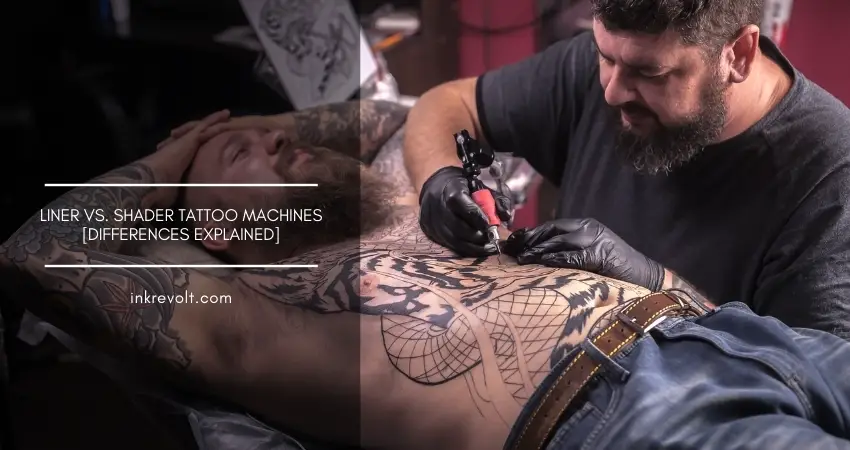Liner Vs. Shader Tattoo Machines [Differences Explained]
People who have just entered the field of tattooing know little about shader and liner tattoo machines. They do not know about the key differences between these two. But that is one of the fundamental things about tattoo machines.
The first difference between liner vs shader tattoo machines is how they work. A liner machine creates the outlines of a tattoo and does the blackwork. A shader adds shades and colors to that tattoo. Next, the front spring of a shader is larger than that of a liner in its making.
Apart from these, there are other dissimilarities in their needles, weight, strength, and movement, and coiling. Get to reading the rest of the article to learn more about the liner vs. shader tattoo machines.
Differenciating Factors Between A Liner And Shader Tattoo Machine

Needles
The configuration and the number of needles are different for liner and shader machines. You need fewer needles for a liner, each needle set suitable for general and broad work. That is why you cannot add many details to your tattoos with a lining device.
You can use at least one and at most seven needles for a liner. The needles have a circle order.
A shader has at least two pairs of needles with the configuration of a comb shape. That allows you to make the drawing and the coloring much more detailed.
Weight
Shaders generally weigh more than liners. The weight of a liner is around eight ounces, while it is as much as 280+ grams for a shading device. But there is no strict rule about that. Artists with large physiques feel comfortable with heavier devices because they suit better. And that is important because a tattoo machine should feel like it were an inseparable part of the artist’s body. If they do not match, the tattoo quality will bear the brunt of that.
Note here that cheap devices may weigh similarly. But it is about your preference. A machine’s weight does not have a direct impact on its capability to make a great tattoo.
Strength And Movement
A tattoo artist has to avoid pausing as well as they can while drawing a tattoo outline. So, to meet this criterion to make a spotless outline, a liner moves faster and has less power. That is not a significant drawback because you can use a shader later and use its power to make more bits and pieces for your tattoo design.
Shaders have more power because they have to support several needles. If they are not adequately powerful, the colors will not come off as bold and lively as they should be. A shader can have 100uF capacitors at the maximum, but a liner has only just 25uF capacitors.
Coiling
In tattooing, tattoo artists use coils having higher wraps for devices with a large number of needles. A shader uses more needles, so it has a higher wrapped coil. Usually, the number of wraps is 10 and 12, depending on the tattoo type and your client’s skin.
On the other hand, a lining device works well enough with an eight-wrap coil.
The coil type is a chief concern here since the wrap number corresponds directly with the needle power. That is because the electromagnetic force works within the device.
Frequently Asked Questions
Can I Use A Liner To Make Shades?
Yes, you can. You have to use liner needles for your shader that cannot be a hard-hitting color packer. Or you could grab a soft lining machine with six wraps to use with smaller needle settings.
Making shades with a liner device will give your tattoo a traditional look. But they will not be soft shades.
Can I Use A Shader To Make Lines?
Yes, you can do that too. It is up to you how you want your tattoos to turn out. Typically, you would need a punchy device to make lines and a soft one for shades. But you are an artist, so you can be creative with the tools if you want.
What Are The Voltage Ranges For Liners And Shaders?
The appropriate voltage amount for lining purposes is six volts. But that is not a rule of thumb. Depending on your preference, you can frequently range it up and down a notch. Most tattooists adjust the voltage range by carefully listening to the gun sound, generating a hum or steady buzz.
As for shading, tattooists use a voltage range from 8v to 10v. 9 is a good start, but you can change it if necessary for your design requirements.
Final Words
I hope the prime areas of liner vs. shader tattoo machines are clear to you by now. But bear in mind that they complement each other. You cannot choose one from them if you want to make a complete and proper tattoo. Thus, it is best to learn their differences and use them creatively to your best capability.
That’s all. Thanks for reading!
